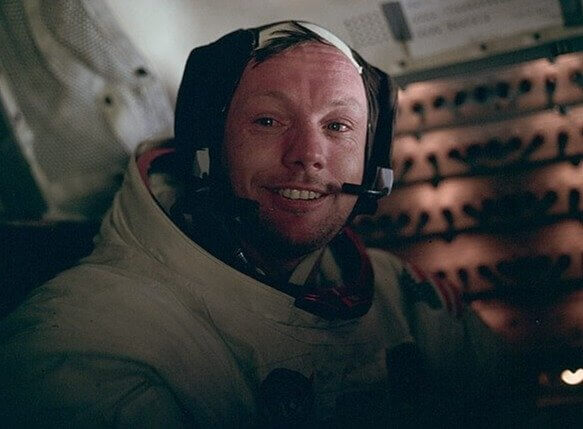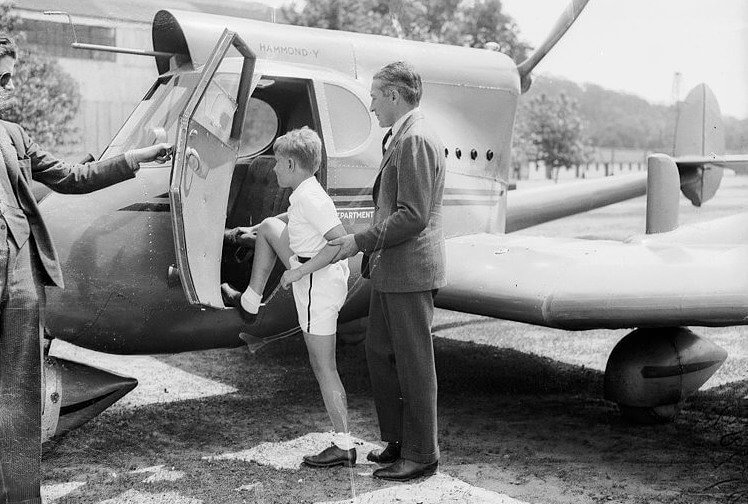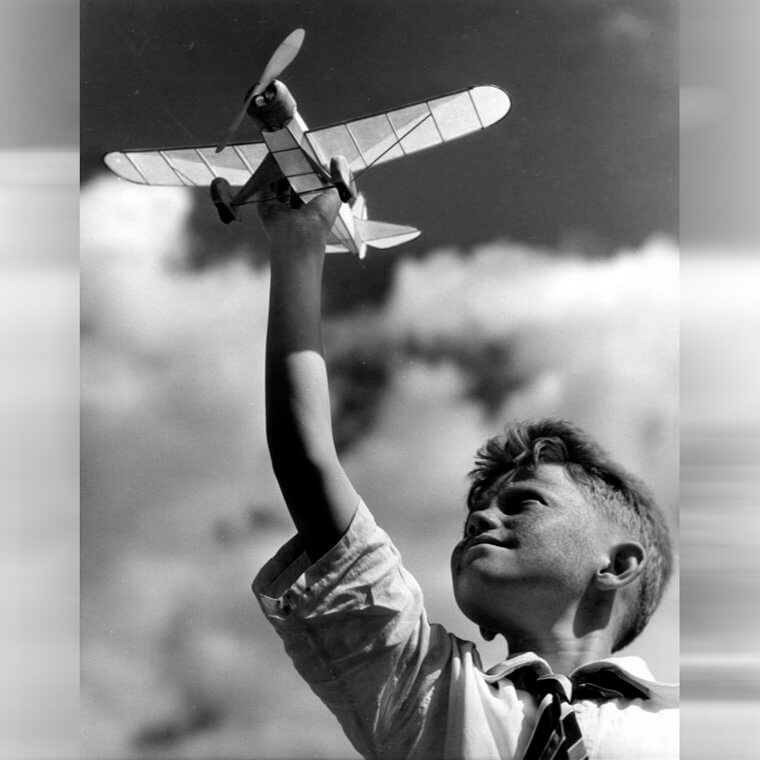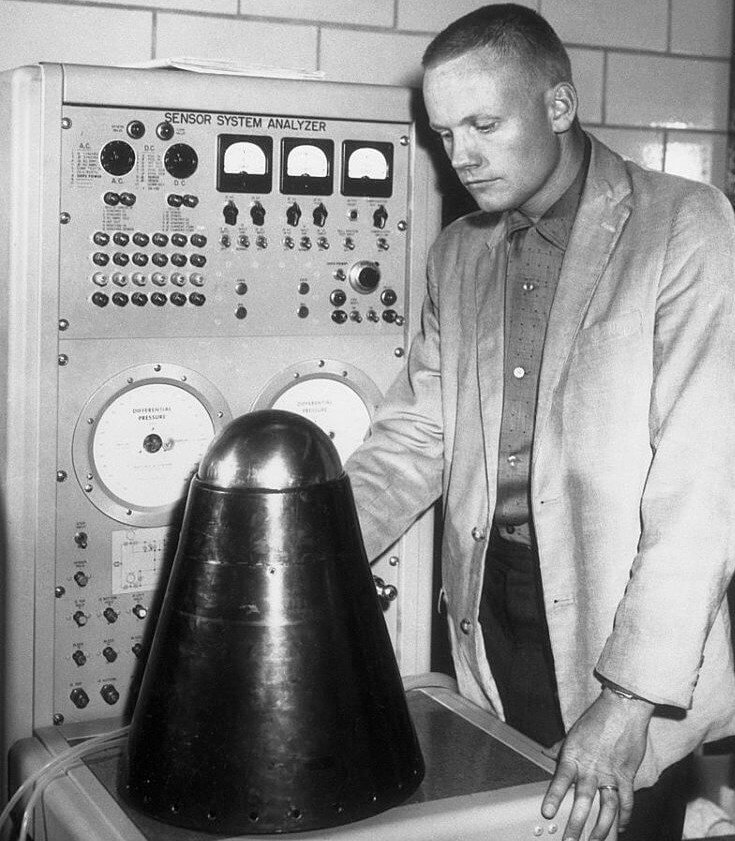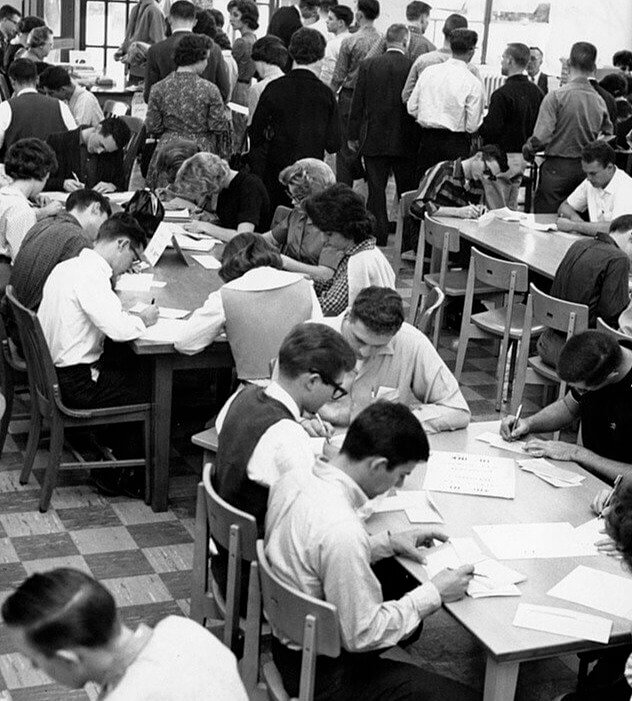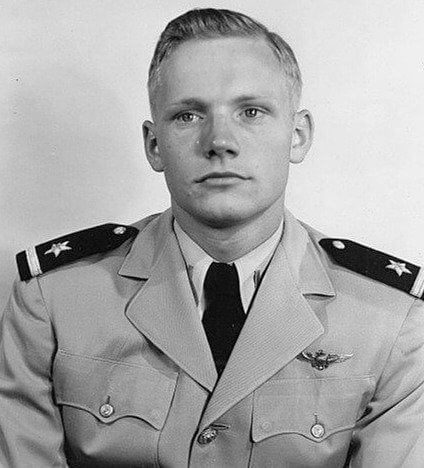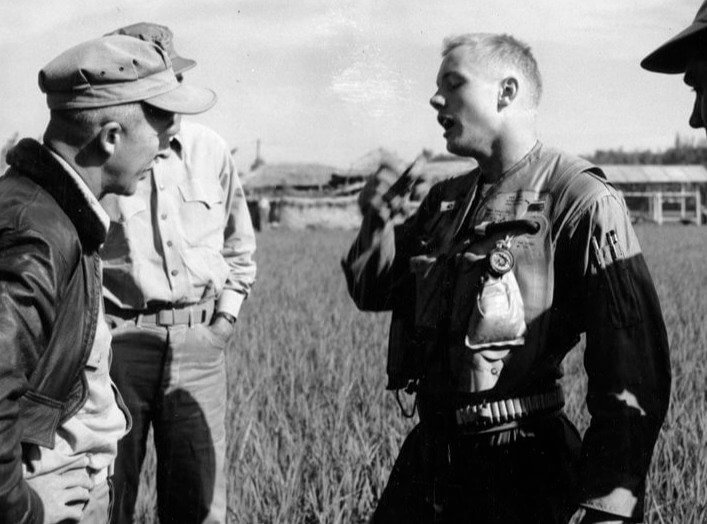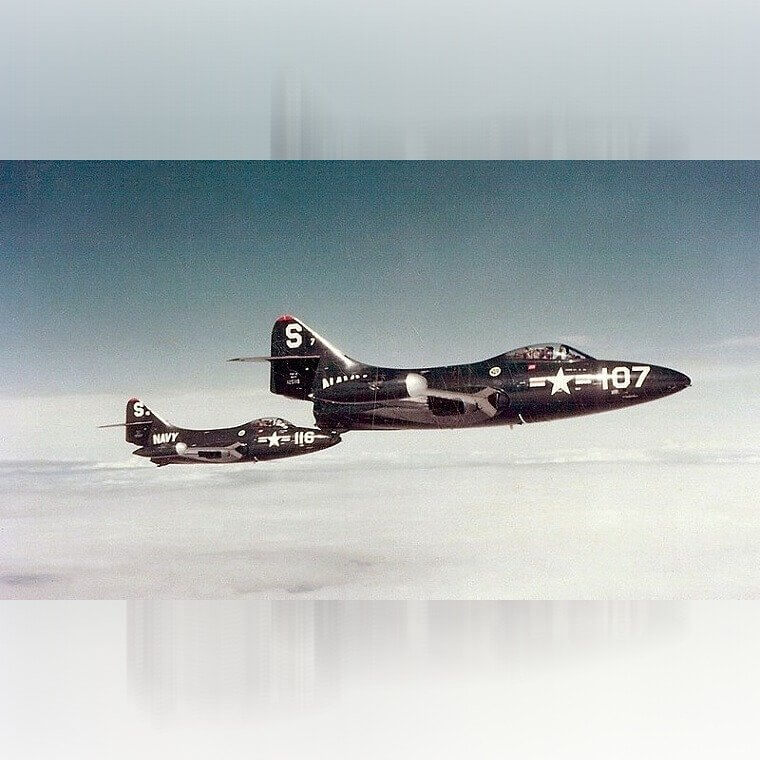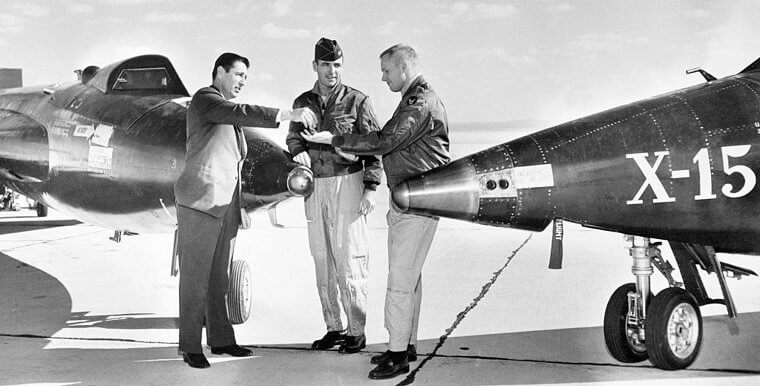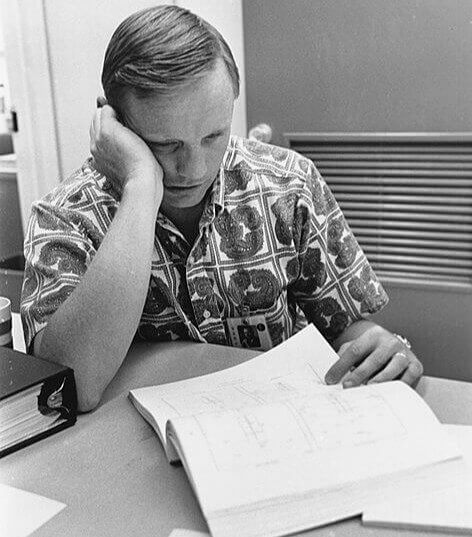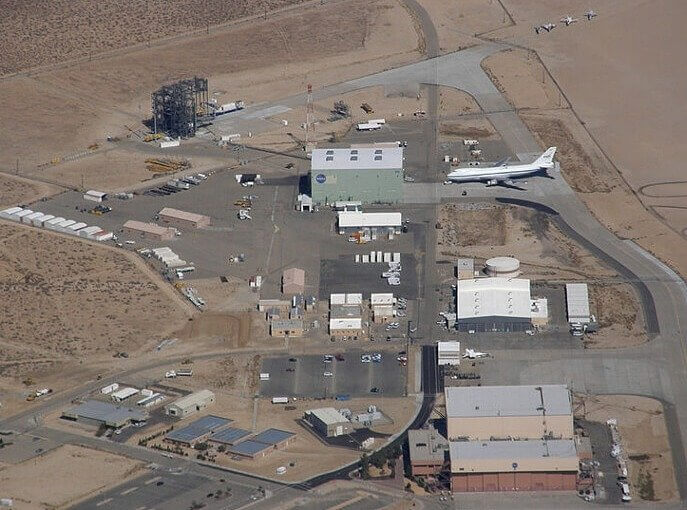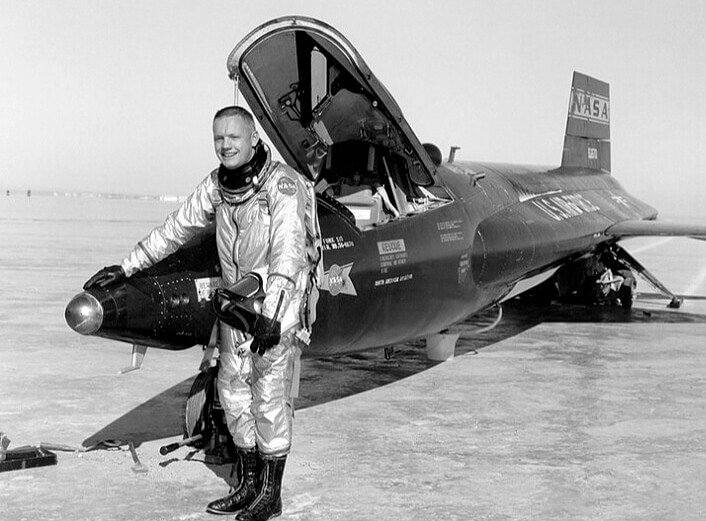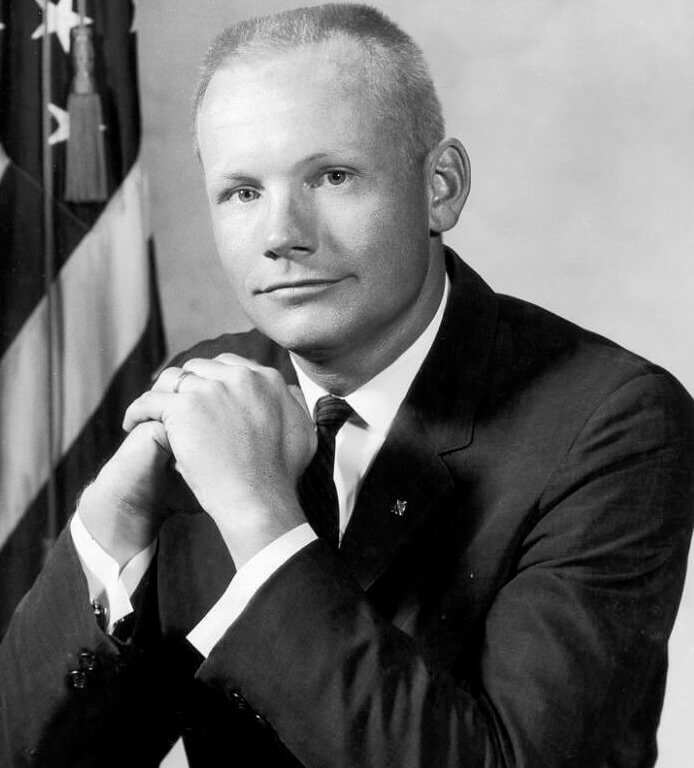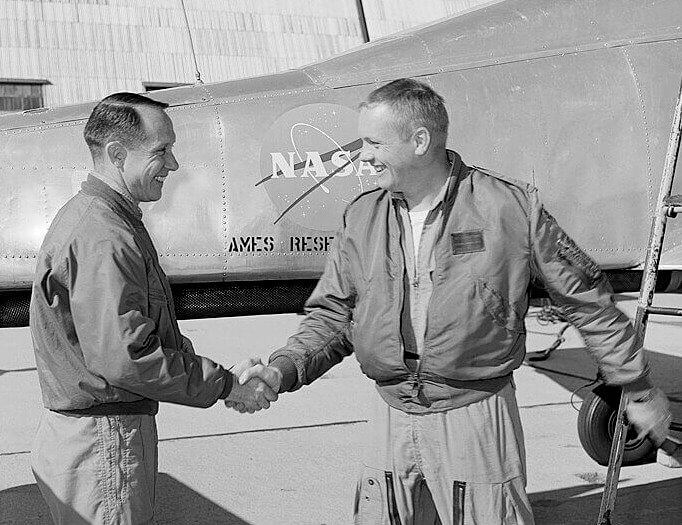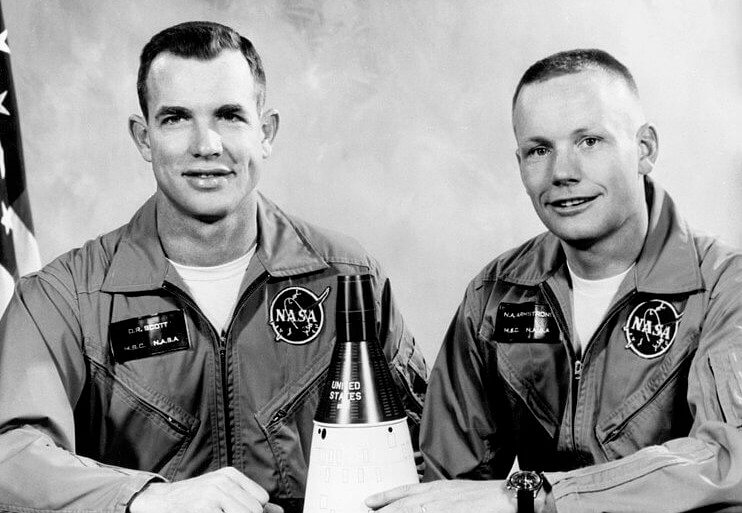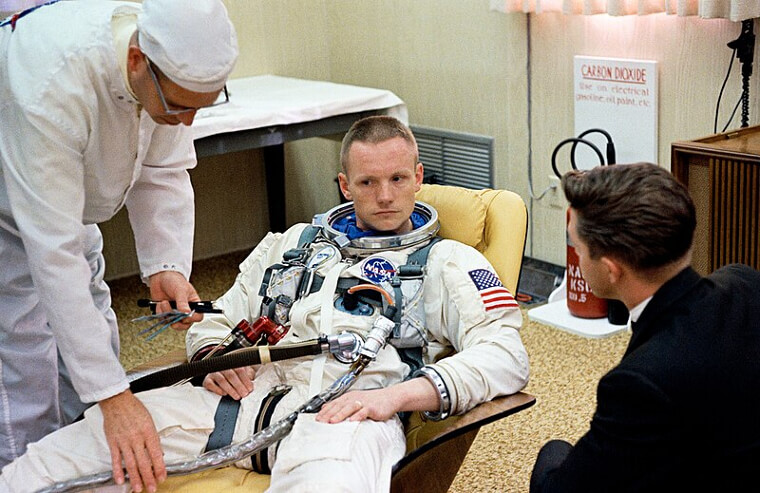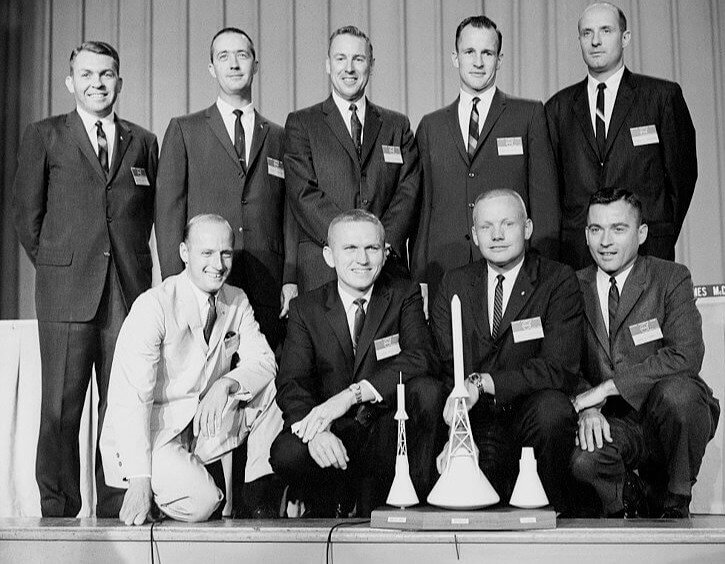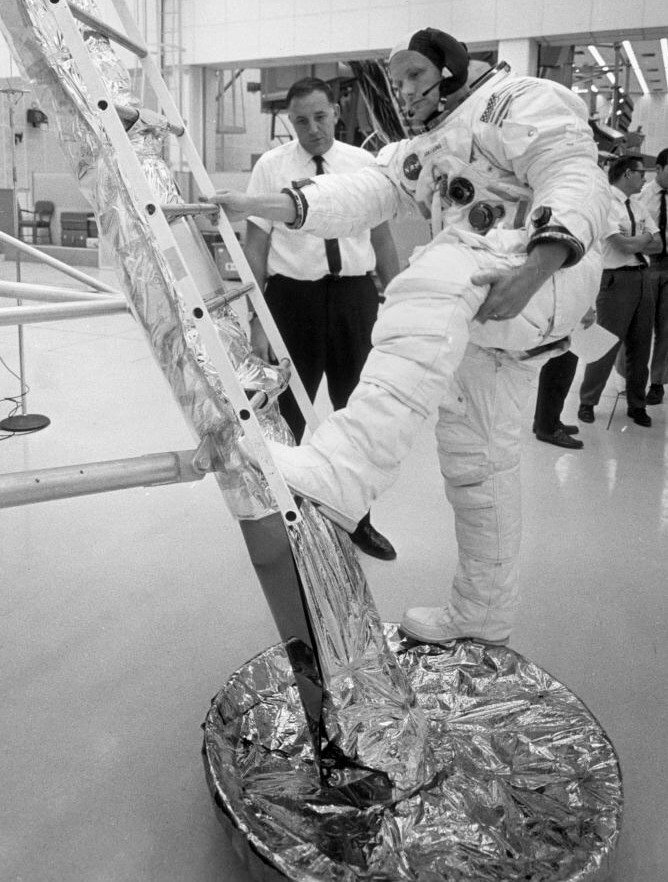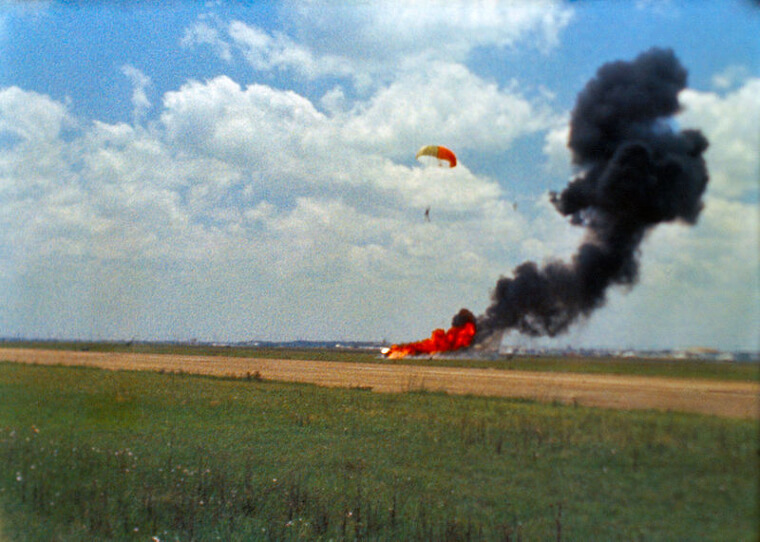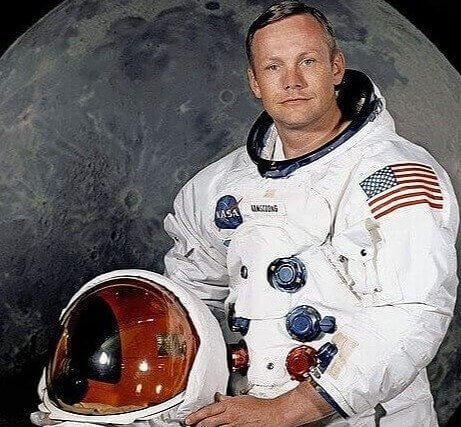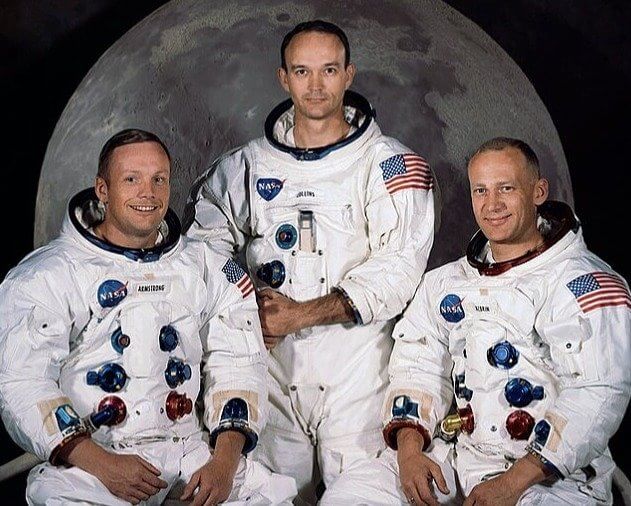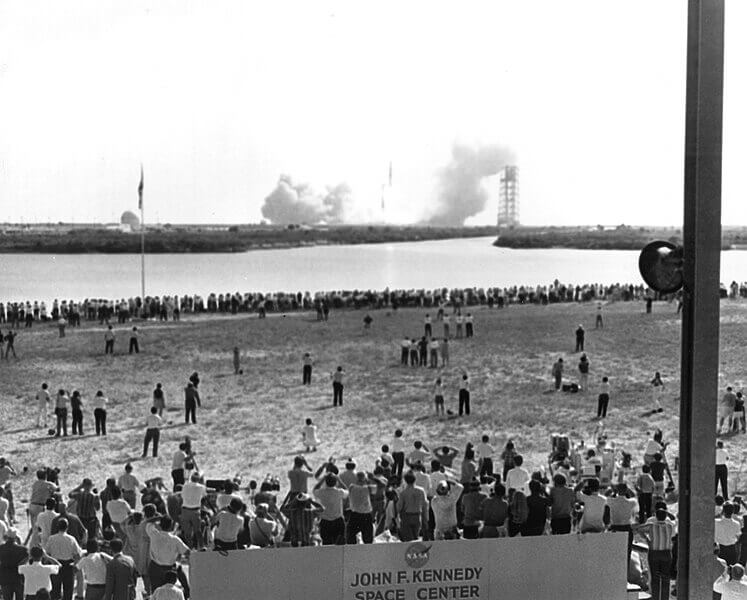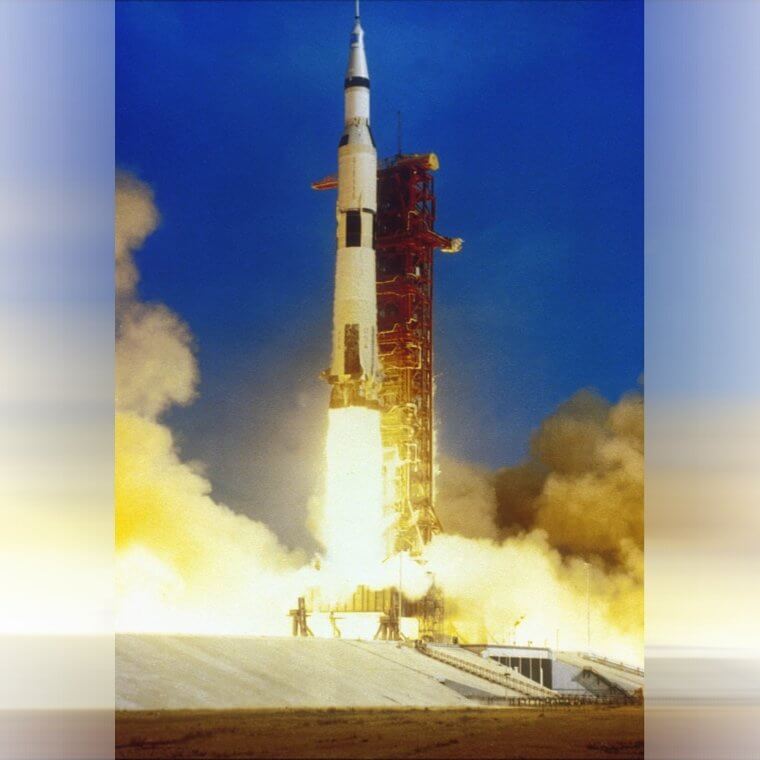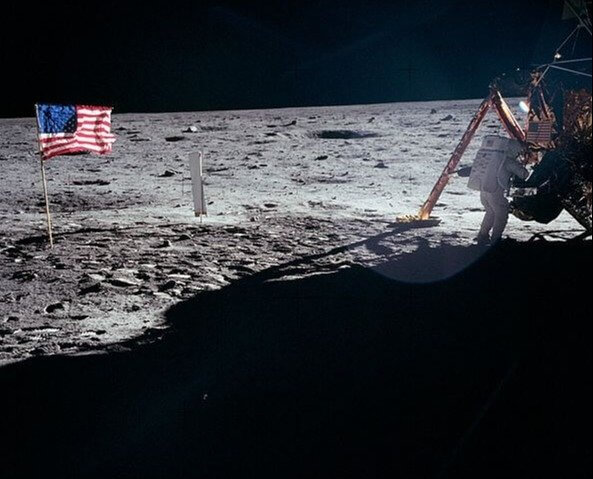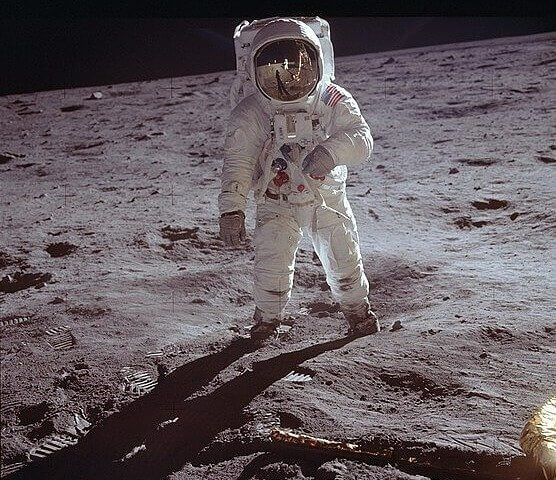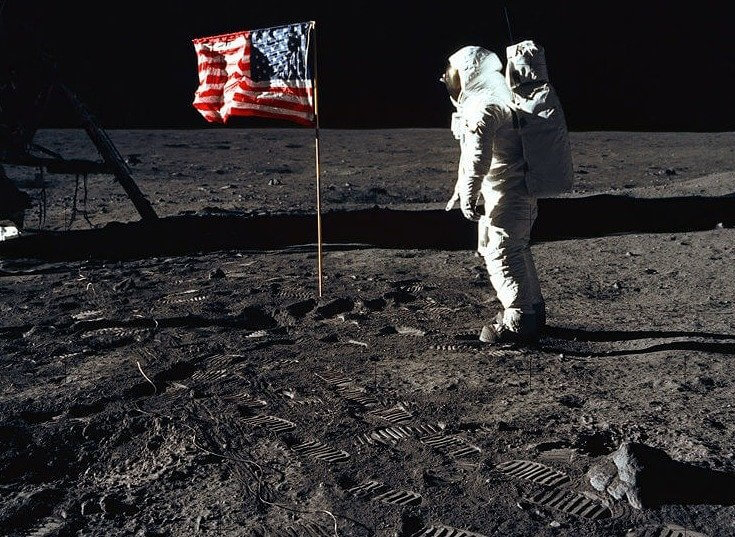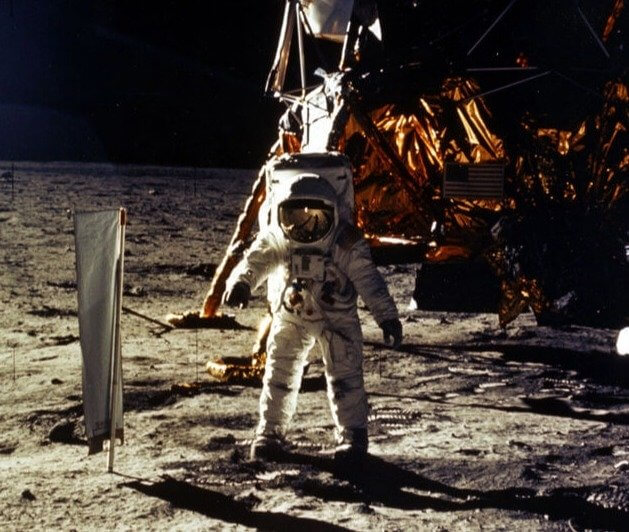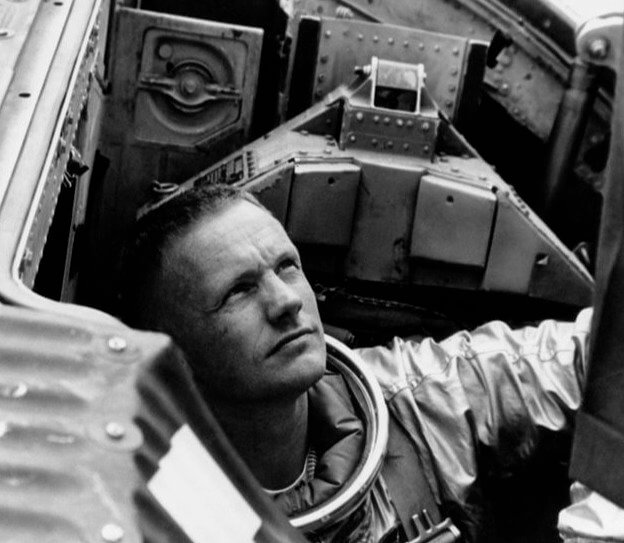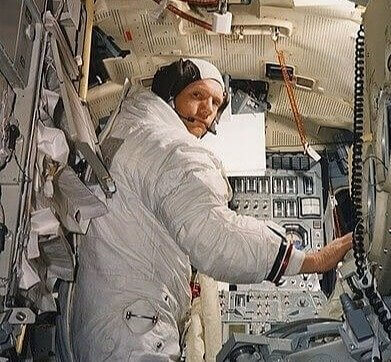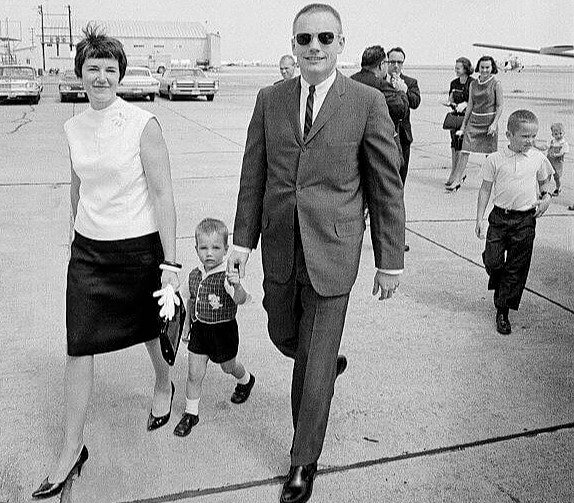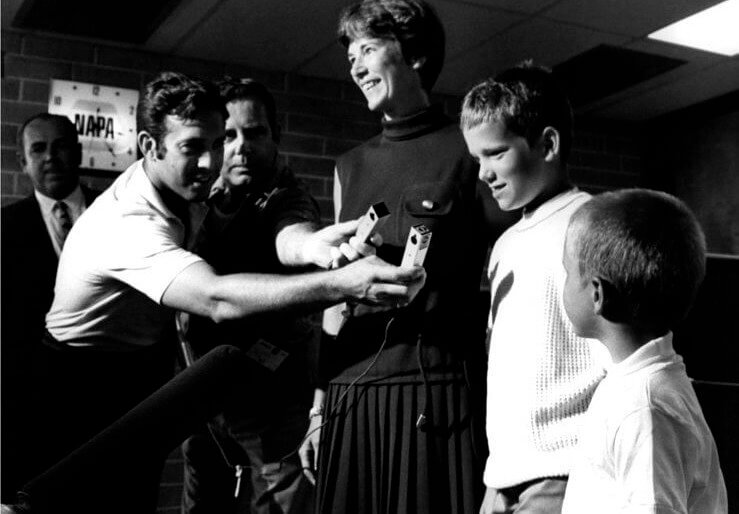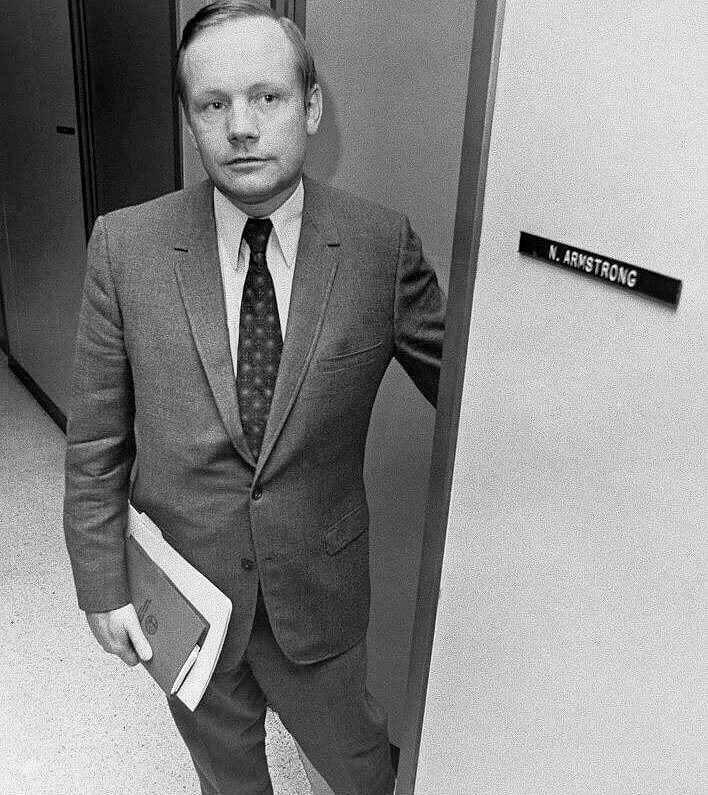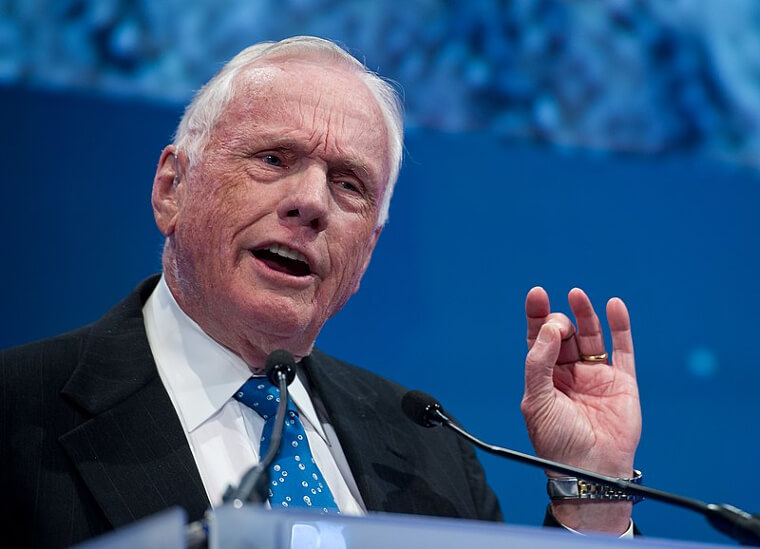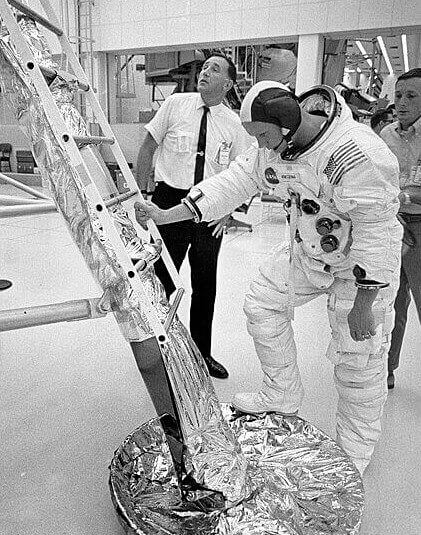Neil Armstrong Was Just A Small Town Kid
In the quiet town of Wapakoneta, Ohio, 1930 marked the arrival of Neil Alden Armstrong, the first child to proud parents Stephen and Viola. Back then, no one could have guessed the extraordinary journey ahead. A regular kid with big dreams, Armstrong transitioned from carefree days in a small town to etch his name in history as the first person to tread the moon's surface. But did he know his future would be so monumental?
Not even his parents could've expected that their son would turn into a man who would change the course of history.
Neil Constantly Moved Around in Childhood
Due to Stephen Armstrong's line of work as a government auditor, his family had a very bustling life. They were constantly on the move, and young Neil's early years involved a whirlwind of 16 moves in 14 years. This nomadic lifestyle disrupted the stability of the Armstrong family, including Neil's little sister, June, and brother, Dean. The constant moving around was unhealthy for the young children and only led him to harbor feelings that would only resurface later in life.
Amidst the challenges he faced, luckily, a silver lining emerged. Because Neil was constantly traveling, he developed an interest in planes very young.
He Became Fascinated With Flying at Only 6 Years Old
Neil Armstrong's love for planes went beyond regular flights. A visit to the Cleveland Air Races stirred even more passion, and it peaked when his dad took him on his first-ever flight on a Ford Trimotor plane nicknamed the "Tin Goose." He was only six years old at the time, but it ignited something in him that he could never forget—an intense passion for flying and being in the sky.
His parents thought at first he was just a kid with a fixation on planes and flying, but little did they know that this obsession would change his life.
By Age 16 He Was Already Flying Planes Alone
After numerous relocations, Armstrong's family found stability and settled in Wapakoneta. Neil enrolled at the local high school and began navigating his teenage years in a new place once again. It was a scary world to navigate, and he felt lonely. So, where did he turn to for comfort during these times? Well, his newfound passion: flying. In fact, by 16, he was taking flying lessons and even completed solo flight. He did this all before even getting a driver's license.
He wasn't your typical teenager; while others were into sports and socializing, he chose to be alone and learn how to fly a plane. What he didn't realize was that this seemingly ordinary passion held a deeper significance; would this come to haunt him in the years to come?
The Big Choice Between Two Universities
In 1947, at just 17, Neil Armstrong was on track to pursue higher education right after high school. No surprises here—his passion for the skies led him to aeronautical engineering. But he had an offer from the prestigious Massachusetts Institute of Technology (MIT) and one from Purdue. He struggled to weigh out which option was better but ultimately chose Purdue. Armstrong's choice leaned towards Purdue because his uncle had convinced him it was worth being closer to home.
But would he come to regret this choice? Later in his life, he was full of nostalgia, longing for the past and moments he could've changed. Would this college choice add another regret to his long list?
He Enrolled in the Navy so They Would Pay for College
What were the words that Neil's uncle gave him, swaying his decision to attend Purdue? Neil's uncle wisely suggested that Purdue, just 150 miles away in West Lafayette, Indiana, could offer an excellent education without the hassle of an 800-mile journey to MIT in Cambridge, Massachusetts. Following this advice, Armstrong, with the U.S. Navy footing the bill, made the pivotal decision to pursue his degree at Purdue. Therefore, it was ultimately logic that finalized his decision.
This move would ultimately lead him to work with NASA eventually, but how would he get there, and was the Navy worth it?
Obligatory Flight Duty in the Navy Awaits
Neil Armstrong's enrollment in a unique program meant that after two years of college, he committed to a couple of years of flight practice followed by a year of flying in the U.S. Navy. Beginning in early 1949 at Florida's Pensacola Naval Air Station, Armstrong embarked on this dual educational and military journey, where books and classrooms soon made way for the exhilarating challenges of flying. This recruitment was the best choice to fulfill his passion and learn.
The program blended academic pursuits with real-world experience, shaping Armstrong's path as he soared from college studies to the skies above Pensacola.
From Solo Flights to Korean War Skies
In September 1949, Neil Armstrong soared into his first solo flight, mastering the skies. His aviation journey reached new heights with a carrier touchdown on the USS Cabot in March 1950. By August, he achieved the milestone of becoming an official U.S. Navy pilot. His eyes were set on flying, and he did just that! His progress continued when he flew the Grumman F9F Panther for the very first time in 1951.
In June, he and his squadron, VF-51, embarked on Korean War duty aboard the USS Essex, showcasing his transition from solo flights to frontline service in the critical era of the Korean War. But fighting in a war meant his life was on the line.
He Was Called to Duty in the Korean War
The Korean War, a Cold War clash, unfolded in June 1950, pitting communist North Korea, with support from China and the Soviets, against South Korea, America, and its allies. In the summer of 1951, 21-year-old Neil Armstrong found himself preparing to be deployed. Backed by his training, Armstrong was ready to apply all he had learned in the classroom to the challenges of the Korean War skies. It was a harsh reality for such a young man.
As he embarked on war, the hidden secrets and darker facets of himself began to emerge, veiled by the stoic demeanor he would later carry through life.
Neil's Close Call With Death
In August 1951, Neil Armstrong faced a real-life thriller in the Korean War. Initially doing spy plane guard duty, he soon found himself on bombing missions. During one of these, a sneaky booby-trap wire in a valley ripped six feet off his plane's wing as he flew low to drop bombs. Somehow, Armstrong managed to stay in the air, but the danger wasn't over. How could he manage to make it out alive?
This heart-stopping moment wasn't just a near-miss; it showcased Armstrong's quick thinking and bravery as he somehow successfully parachuted as the jet crashed and was rescued.
He Ultimately Survived a Plane Crash
In a harrowing turn of events, Neil Armstrong faced a dire situation when he lost control of his plane. Realizing he couldn't safely land on the USS Essex, he had only one choice—eject. Opting for a parachute descent over the sea, his plan for a helicopter rescue took an unexpected twist. The wind, however, had other ideas, steering him inland. But just when he needed it, a stroke of luck hit him.
An old flight school buddy appeared in a jeep just in time, whisking Armstrong to safety, and he narrowly escaped what could've been a fatal accident.
Neil Returned to College After the War and Took up Marching Band
Surviving the 1951 close call, Neil Armstrong showcased resourcefulness and courage in almost 80 missions from January to March 1952. Post-Korea, he became a reservist, soaring through the skies while also returning to Purdue to complete his studies. Beyond the realm of combat, Armstrong revealed a lesser-known side—his involvement in amateur theatrics. Seamlessly transitioning from the intensity of war to the creativity of college life, and even joined the marching band.
After the intensity of the war, college life was a breeze, and extracurricular activities were the only way he could distract himself from flashbacks to his time in combat.
Love, Loss, and Armstrong's Unseen Pain
In 1955, Neil Armstrong celebrated an academic triumph, completing his degree. A year later, joy and sorrow intertwined as he married his college sweetheart, Janet Shearon, in January 1956. The couple embraced parenthood, sharing the love of three children: Karen, Eric, and Mark. However, the summer of 1961 brought an unfathomable challenge. Their middle child, Karen, faced a devastating diagnosis of brain cancer. Tragedy struck in early 1962 when Karen, not yet three, succumbed to the illness.
Neil had already experienced war and was now grappling with the death of his young daughter from a horrible disease. There was darkness in his life, but he was determined to push through.
Making Career Strides
In the face of profound personal loss, Neil Armstrong forged ahead in his professional pursuits. Post-graduation, he soared into a career as a test pilot at Cleveland's Lewis Flight Propulsion Laboratory, taking to the skies for the first time in March 1955. By July, Armstrong had transferred to Southern California's Edwards Air Force Base High-Speed Flight Station. The year 1956 became a turning point for him, and he was ready to show off his talent.
But his skills would ultimately be put to the test soon enough, and only time would tell if he could handle it.
A Scary Crisis During a Test Flight
In March 1956, Neil Armstrong took the pilot's seat in a modified Boeing B-29 Superfortress for a crucial test flight. As the plane ascended, disaster struck—a critical engine failed. In a desperate attempt to salvage the situation, the crew activated an experimental Skyrocket. However, chaos ensued as one of the propellers disintegrated upon release, hurling fragments into two other engines. Amidst the airborne destruction, Armstrong faced a moment of reckoning.
Once again, he found himself in a terrifying near-death experience and had to find a way out.
Neil Always Remained Calm, Cool, and Collected
In a tense moment during a test flight, Neil Armstrong faced engine failures, leaving him with a seemingly counterintuitive choice—turning all engines off. With only one functional engine, Armstrong navigated a cautious descent, successfully landing the massive Superfortress. This nerve-wracking incident was just one among over 200 different planes Armstrong flew as a test pilot, each carrying its own share of risks. He was constantly put in these dangerous situations but made it out.
Recognized by colleagues as an excellent engineer, Armstrong's ability to make split-second decisions in the face of danger became a hallmark of his journey, setting the stage for his later historic feats.
He Was Unexpectedly Accepted by NASA
In 1962, NASA extended an invitation for aspiring astronauts. Neil Armstrong, applying well past the deadline, caught a lucky break when friend Dick Day, discovering his application, ensured it reached the right hands. Against the odds, Armstrong was accepted. By 1965, NASA appointed him as a backup astronaut for the Gemini 5 mission—a crucial step toward landing on the Moon. He had always been a great pilot and passionate about flying, but could he take it to the next level?
He was familiar with planes and flying, but this was a whole new ball game. Armstrong's unexpected trajectory into the world of space exploration would change everything he knew.
Heading Into Space as a Newbie
After missing out on Gemini 5, Neil Armstrong landed a front-row seat as the main guy for Gemini 8. As the command astronaut, he partnered with space-flight newcomer David R. Scott as the pilot. Their mission aimed for something never done before a docking exercise in orbit with an uncrewed vessel. This wasn't just a trip to space; it was a groundbreaking ride that set the stage for bigger things.
Could Neil prove himself to be an astronaut and use his flying skills in a new setting, space? He had been through so much already; would it weigh him down, or could he succeed?
Armstrong's Scary Odyssey on Gemini 8
In another episode of Armstrong's space saga, things took a bumpy turn. After a smooth docking, their spaceship started spinning out of control. Even after separating from the other vessel, the problem escalated. Armstrong had to take a drastic step, turning off a vital system. This meant they had to cut their space trip short and head back to Earth sooner than planned. Once again he was facing a disastrous situation.
Battling the disorienting spin, Armstrong showcased exceptional skill, successfully steering the spacecraft back to Earth in an unplanned and challenging descent.
Gemini 8's Safe Landing
Gemini 8 had a rocky return, splashing down near Japan on September 15. The buzz was: who messed up? Some pointed fingers at Armstrong, thinking he had made a misstep during the emergency. But here's the twist—most folks agreed: it wasn't the astronauts' fault. Despite a smooth splashdown, the question of what caused the mid-flight chaos hung in the air. The verdict? Armstrong and the crew were in the clear. So what actually happened?
The cosmic puzzle of what really happened during their space adventure remained unsolved, and no one could pinpoint where the mistake was. But once again, Neil proved himself skilled enough to make a smart call and get them to safety.
A Bounce Back From the Gemini 8 Disaster
Despite the setback of Gemini 8, Armstrong quickly rebounded. In 1967, a ray of hope emerged as he, along with 17 colleagues, was selected for the Apollo program, a chance to journey to the Moon. This marked a pivotal shift in fortunes. Set on space exploration, Armstrong delved into intensive training, gearing up to command the lunar module's descent onto the Moon's surface. It would be a huge shift, and this type of mission couldn't afford any mistakes.
He had to put any fears, anxieties, and ego behind him to prepare for this mission fully. The stakes were at an all-time high.
Moon Landing Prep Was Full of Malfunctions That Could've Cost His Life
In NASA's quest for lunar success, three Lunar Landing Training Vehicles (LLTV) were crafted for crucial Moon landing rehearsals. Nicknamed "flying bedsteads" by the astronauts, these vessels became pivotal in the training process. However, history took an eerie turn in May 1968 when Armstrong, piloting one of these training crafts, faced a nerve-wracking malfunction at just 100 feet altitude. Echoing past mishaps, the vehicle lurched unexpectedly, revealing the unpredictable challenges of space exploration.
Neil consistently found himself in these dangerous situations and was unfortunately used to being under pressure and high stress. But how would he respond in the moment, and would he make the right call?
Armstrong's Narrow Escape
In a life-or-death moment, Armstrong faced a critical decision when his Lunar Landing Training Vehicle (LLTV) malfunctioned. Opting for ejection, he miraculously emerged with just a bitten tongue. The stakes were high, considering the LLTV's fiery crash following his escape. Technicians later revealed a chilling detail: had Armstrong delayed ejection by a fraction of a second, the parachute would have failed, altering the course of history. He was, once again, lucky to be alive.
Coming face to face with life-or-death situations constantly is not normal and this put a lot of stress on Neil, yet he loved his work and continued training.
He Was Ready to Take on a Leadership Role
Armstrong's encounter with the 'flying bedsteads' was more than a close call—it became a crucial chapter in his lunar education. Despite the hair-raising incident, Armstrong emphasized the importance of LLTV training for the upcoming Moon missions. Following this, he served as a backup commander for Apollo 8 in December 1968. As Apollo 8 orbited the Moon, NASA recognized Armstrong's capabilities, offering him the command of Apollo 11. His life would soon forever change.
The stakes were high, but he was ready to take on this challenge. With all his experience up until this point, Nel was more sure than ever that he could guide a successful mission.
Leading Apollo 11 to the Moon
Embracing destiny, Armstrong agreed to command Apollo 11, accompanied by Buzz Aldrin and Michael Collins. The iconic mission saw Armstrong and Aldrin making history with a successful lunar landing while Collins orbited above in the return ship. Thanks to his stellar record, NASA entrusted Armstrong with the monumental moment, making him the first human to step onto the moon. On July 20, 1969, Armstrong descended the ladder of the lunar module, leaving an indelible footprint on the soil.
He etched his name in history as the trailblazer who led humanity into the uncharted realm of lunar exploration.
They Were off for a Historic Journey to the Moon
Amid the thunderous countdown on July 16, 1969, the mighty Saturn V rocket catapulted Armstrong, Aldrin, and Collins into the cosmic unknown. On the edge of the Banana River, Armstrong's wife, Janet, and their sons, Eric and Mark, gripped the rails of a boat, eyes fixed on the ascending spacecraft. The air was thick with anticipation, and as the rocket soared, a collective sigh of relief and cheers echoed through the crowd.
With hearts pounding and excitement in the air, the trio embarked on a historic journey, leaving Earth's atmosphere behind! Neil had been through intense experiences before, but this would alter him in ways he hadn't imagined.
They Circled the Moon Waiting for the Right Moment
With a thunderous lift-off, the spaceship catapulted into Earth's orbit. Soon after, its engines roared once more, propelling Armstrong, Aldrin, and Collins toward the Moon. Three days later, on July 19, 1969, the mission reached its lunar destination. The spacecraft gracefully entered the Moon's orbit, marking the beginning of a historical moment that had everyone holding their breath in anticipation of what would come next. The astronauts were ready to do what they came there for.
Over the next three days, the trio circled the Moon 30 times, steadily approaching the historic moment when they would descend onto the moon.
The First Human Steps on the Moon
On July 20, 1969, Armstrong and Aldrin bid farewell to the orbiting command module, stepping into the compact lunar module, Eagle. As they descended toward the Moon's surface, Armstrong, in control of the lunar module, deftly navigated the challenging terrain. His trained eyes spotted a smooth expanse amidst craters, and with steady hands, he steered Eagle to a flawless landing. The historic touchdown on the lunar soil marked the culmination of meticulous planning and skillful piloting.
Humanity officially left its mark on the moon, and Neil led that mission. It was an unforgettable moment that would haunt him.
They Had Seconds of Fuel Left Before Landing
On the Moon's surface, Armstrong and Aldrin faced a heart-pounding descent with less than half a minute of fuel left. The tension was palpable, reflected in Armstrong's racing heart at 150 beats per minute. Navigating with skill and nerve, Armstrong safely guided the lunar module to a historic touchdown just in the nick of time. Used to high-stress environments, Neil handled it with ease, and though his heart was racing, he landed perfectly.
They successfully landed, stepped out, and were on the Moon's surface, taking in the views in awe.
Neil's Iconic Words That Were Spoken as He Stepped Onto the Moon
Almost seven hours after landing, Armstrong stepped out onto the lunar surface, imprinting his boot in moon dust. In a globally resonant moment, he spoke the immortal words, "That's one small step for man, one giant leap for mankind." This iconic declaration echoed worldwide, marking a pivotal point as humanity collectively watched the first human steps on the Moon. Neil had started off as a kid with a fascination for the sky and was now the first man on the Moon.
The entire experience for them was overwhelming and hard on their physical bodies as well as mental states. But it was a historical feat nonetheless.
Their Homecoming From the Moon
After spending more than 21 hours on the Moon, Aldrin and Armstrong, accompanied by Collins, safely made their way back to Earth eight days later. The three astronauts immediately quarantined for around 21 days upon landing. This was a safety protocol in case they had encountered any microorganisms on the moon that would be potentially fatal on Earth or spread like a virus. After the quarantine, they were finally ready to emerge back to life on Earth.
There were celebratory parades and crowds of people cheering everywhere. The astronauts were then greeted with widespread media coverage and public appearances. But how would this newfound fame treat them?
The Unseen Struggles of Neil
While it might seem like life would be smooth sailing for the first man on the Moon after such a monumental achievement, reality was far from easy for Armstrong. The challenges he faced in later years came to light in James Hansen's biography, First Man: The Life of Neil A. Armstrong. The book unveiled the untold story of Armstrong's post-lunar life, exposing the private battles that lurked behind his public persona.
The biography finally shed a light on the complexities faced by a man who had ventured into the unknown and returned with hidden burdens. Neil wasn't the same man after this historical moment.
He Seemed Calm and Humble but Had Dark Thoughts
In a revealing 2019 interview with the Daily Mirror, Armstrong's biographer, James Hansen, shared insights into the astronaut's unique persona. Describing Armstrong as remarkably ego-free, Hansen highlighted the astronaut's refusal of lucrative opportunities post-Moonwalk, emphasizing his down-to-earth approach to life. While many of his lunar peers experienced spiritual shifts, Armstrong remained unchanged. Yet, behind this facade, Armstrong's life took an unexpected turn. He had changed, though he didn't like to admit it.
Behind the scenes, the astronaut's personal life wasn't as easy as people assumed. He struggled mentally and developed an obsession.
He Was Secretly Terrified of One Thing
Despite his self-proclaimed identity as a "white-socks, nerdy engineer," Armstrong harbored hidden anxieties that permeated his daily life. According to Hansen, the astronaut grappled with an intense fear of his sons, Mark and Eric, being kidnapped. The thought haunted him over and over. Delving deeper into his psyche, Armstrong found himself haunted by the tragic story of Charles Lindbergh, the renowned flying ace who faced a harrowing incident in 1932.
Armstrong's struggles with these obsessions unveil a side of the legendary astronaut that showed his vulnerability that most people didn't see beneath his stoic exterior.
Intense Paranoia and Family Problems
Haunted by the notorious Lindbergh kidnapping tragedy, Neil Armstrong found himself grappling with the scary possibility of potential threats against his own family. Mark Armstrong, Neil's son, later spoke about his father's disclosed fears and hints of threats that led the astronaut to retreat from the limelight to shield his children from harm. However, this retreat didn't shield Armstrong from personal turmoil. As life continued this way, it took a huge toll on his relationship with his wife, Janet.
The intense paranoia and fear, paired with marital problems, took its toll on Neil, and he was withdrawing.
Neil Armstrong's Unspoken Grief and Personal Battles
As Neils's mood darkened, the past that their family had tried to brush under the rug was revealing itself. One thing they never talked about was the tragic passing of their daughter. In the aftermath of Karen's death, Neil and Janet Armstrong faced a profound and enduring sorrow. The pain ran so deep that Neil was unable to discuss the heart-wrenching loss and left Janet to bear the grief all on her own.
Their son, Mark Armstrong, revealed that the family rarely spoke of Karen's death, and significant dates, like their parents' anniversary, were marked by the unhealed wound.
Complex Family Issues and New Marriages
The pain took its toll on their marriage, and their relationship fell apart. In 1990, after nearly four decades of marriage, Neil Armstrong and Janet parted ways, finalizing their divorce in 1994. It was a shock to all, but even more shocking was how fast Neil moved on. He almost immediately got involved in a new relationship. That same year, he married Carol Knight. However, the joy of his second marriage was accompanied by fresh anxieties.
Although his sons were adults by this point, he was scared this new marriage would strain his relationships with them.
He Never Spoke About the Death of His Daughter
As Neil aged, he was haunted by his past experiences. Though renowned as the first man on the moon, he carried an unspoken burden regarding both his lunar achievement and personal hardships. He deliberately avoided discussing the Moon landing, fearing misrepresentation and neglecting his extensive career as a naval and test pilot. In an interview, biographer James Hansen revealed Armstrong's concern that people fixated solely on the Moon landing, overshadowing his broader life experiences.
This silence also extended to the profound loss of his daughter, a topic never broached at home that ultimately ate away at him.
Neil Couldn't Handle All of the Fame
Neil Armstrong, the pioneer of lunar exploration, wasn't your typical space hero. Forget the macho stereotypes—Armstrong was a one-of-a-kind astronaut. James Hansen, his biographer, paints a fascinating picture of a man who defied expectations. Armstrong's journey wasn't just about planting the American flag on the moon; it was a personal odyssey filled with complexities. Beyond the spacesuit, he grappled with fears, family tragedies, and, ultimately, the weight of fame was too much.
He couldn't recognize his achievements without feeling the guilt of his failed marriage, the loss of his daughter, and the constant fear of his sons abandoning him. The fame just added another element that he was not prepared for.
Buzz Battles Conspiracies While Neil Remained Low-Key
Once wild theories about the moon landing circulated, Neil always preferred to lay low and keep to himself. But his astronaut counterpart wasn't afraid to step into the limelight and face the rumors. Buzz Aldrin disclosed surprising details about their historic mission, demystifying the Apollo experience and helping prove conspiracy theories wrong. Whereas Neil mostly remained quiet when it came to public opinion. He struggled with the weight of his life and couldn't take this on also.
Ultimately, when Neil was 82, he passed away from complications from a cardiac surgery. He had lived a life full of incredible achievements that changed history forever. Whether he was able to see it for himself, the world would never be the same after his leaps for mankind.

